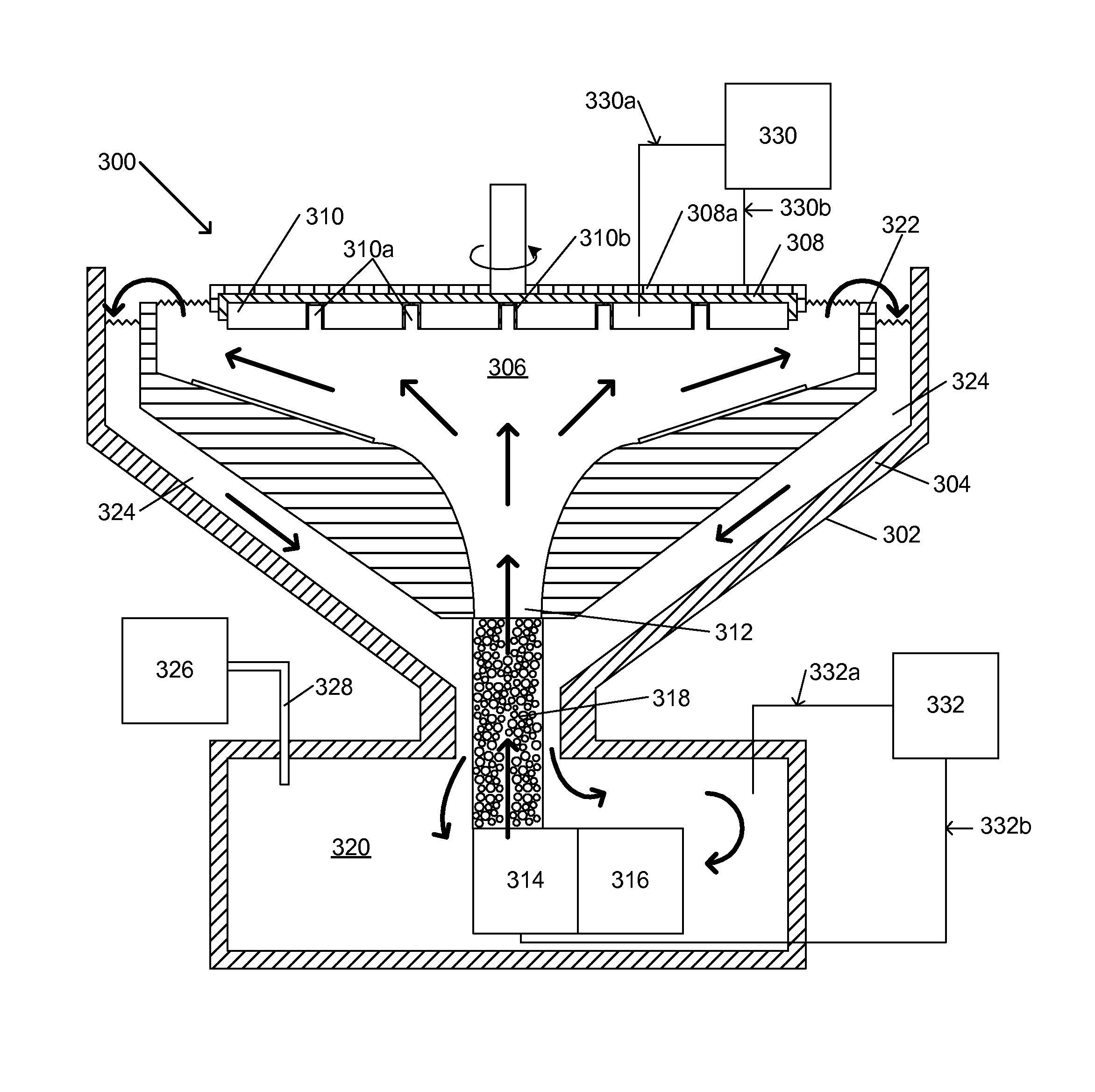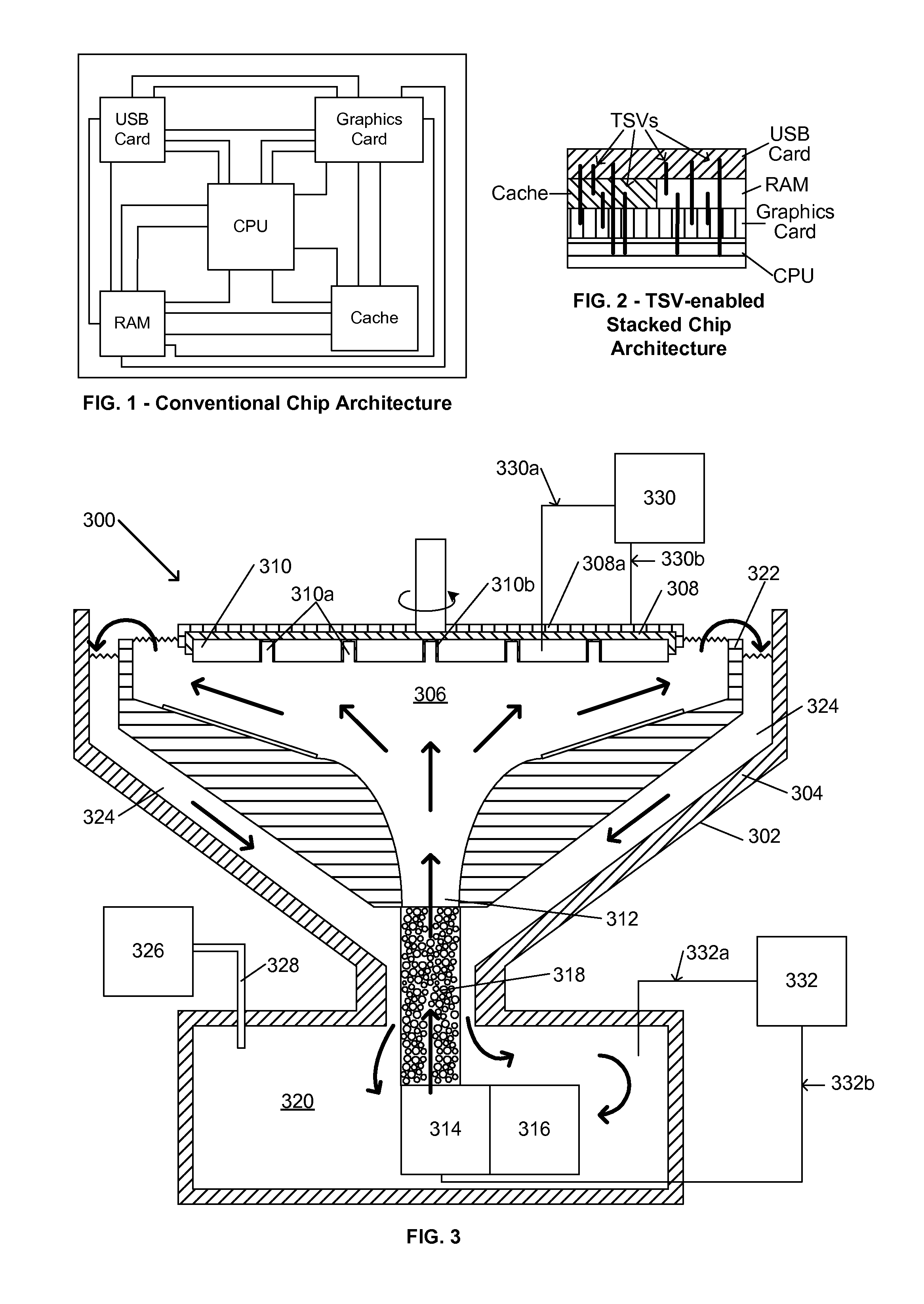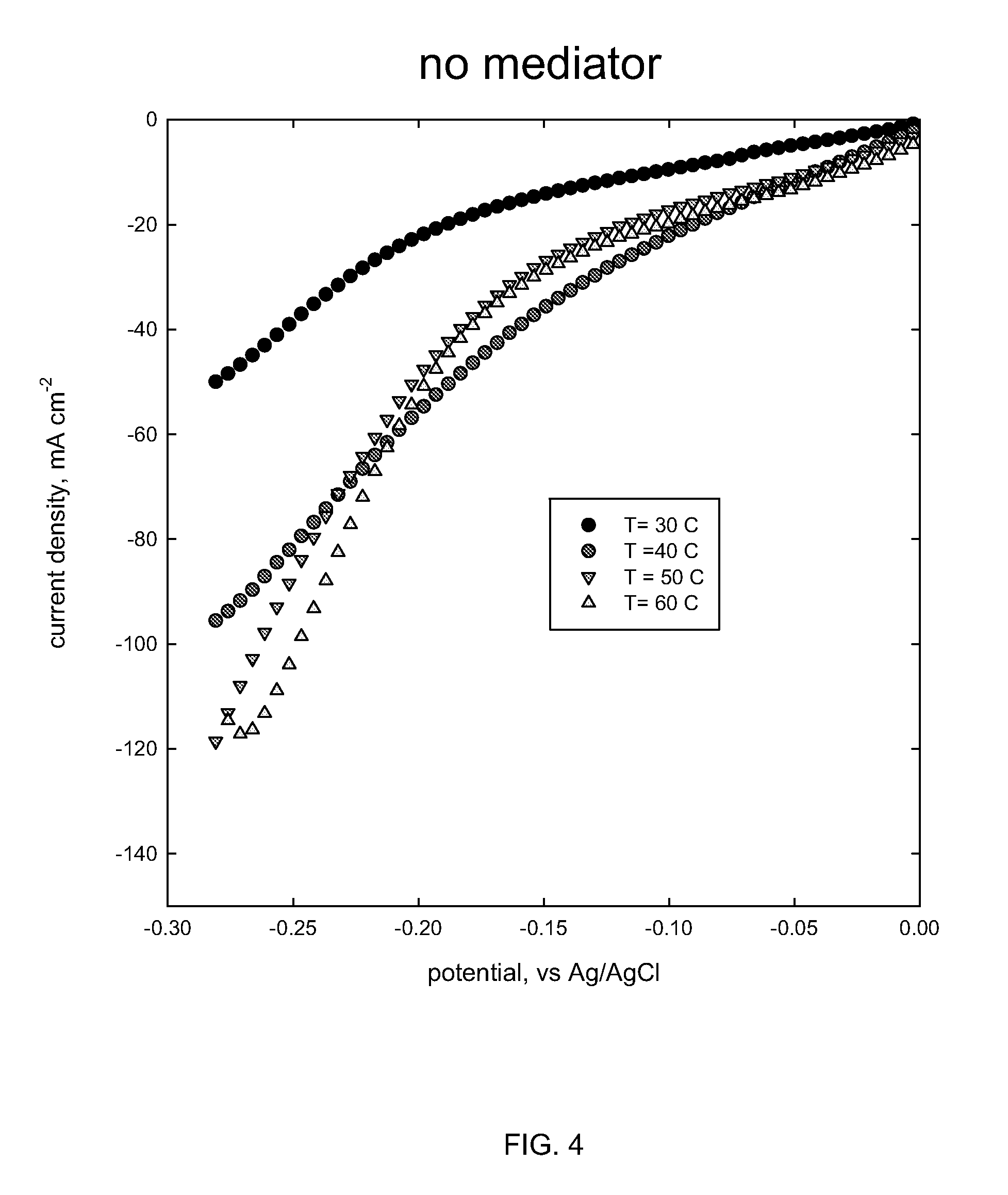Process for electrodeposition of copper chip to chip, chip to wafer and wafer to wafer interconnects in through-silicon vias (TSV) with heated substrate and cooled electrolyte
- Summary
- Abstract
- Description
- Claims
- Application Information
AI Technical Summary
Benefits of technology
Problems solved by technology
Method used
Image
Examples
example 1
[0202]To produce a TSV filled with a high purity copper deposit, a wafer is provided with vias having a diameter of about 10 microns and a depth of about 50 microns. The inner sidewalls of the vias are coated with a diffusion barrier layer formed from tantalum nitride applied by sputtering. The tantalum nitride layer is covered with a liner layer of tantalum applied by sputtering. Next, the liner layer is coated with a copper basic metal layer by sputtering, in which the copper basic metal layer has a thickness of about 0.1 micron. The wafer is then immersed in a copper deposition bath described below in which the wafer is connected as a cathode, heated to about 40° C., an insoluble anode is included in the apparatus, and the bath is maintained at room temperature. The via is filled with high purity copper by electrodeposition from the bath having the following ingredients, to form the TSVs in accordance with the present invention:
H2SO4, 98% by wt.130g / lCuSO4•5 H2O70g / lFeSO4•7 H2O15...
example 2
[0208]Copper stress in TSVs deposited by different plating methods using the bath of Example 1, in accordance with the invention, including heating the wafer substrate and maintaining the bath at the lower temperature, and in a first comparative example, using a similar bath and a soluble copper anode without the added Fe2+ / Fe3+ ions and without heating the wafer substrate and in a second comparative example using a similar bath including all the above ingredients but without heating the wafer substrate, in which pulsed current is applied with the parameters shown in the table below:
Pulse inmillisecondsPhaseIforward / IreverseForward- / Pulse-gap inshift inExamplesin A / dm2Reverse-Pulsemillisecondsdegrees1 and 26 / 4072 / 44180
Electrodeposition MethodStressCu RateUnheated wafer, soluble copper anode:163.2 ± 34.3 MPa(prior art)Unheated wafer w / Cu / Cu2+ / Fe2+ / Fe3+113.4 ± 40.1 MPa≈1 μ / minredox (prior art)Heated wafer w / Cu / Cu2+ / Fe2+ / Fe3+ redox66.9 ± 9.8 MPa≈2 μ / min(present invention)
[0209]The inte...
PUM
| Property | Measurement | Unit |
|---|---|---|
| Temperature | aaaaa | aaaaa |
| Temperature | aaaaa | aaaaa |
| Temperature | aaaaa | aaaaa |
Abstract
Description
Claims
Application Information
 Login to View More
Login to View More - R&D
- Intellectual Property
- Life Sciences
- Materials
- Tech Scout
- Unparalleled Data Quality
- Higher Quality Content
- 60% Fewer Hallucinations
Browse by: Latest US Patents, China's latest patents, Technical Efficacy Thesaurus, Application Domain, Technology Topic, Popular Technical Reports.
© 2025 PatSnap. All rights reserved.Legal|Privacy policy|Modern Slavery Act Transparency Statement|Sitemap|About US| Contact US: help@patsnap.com



